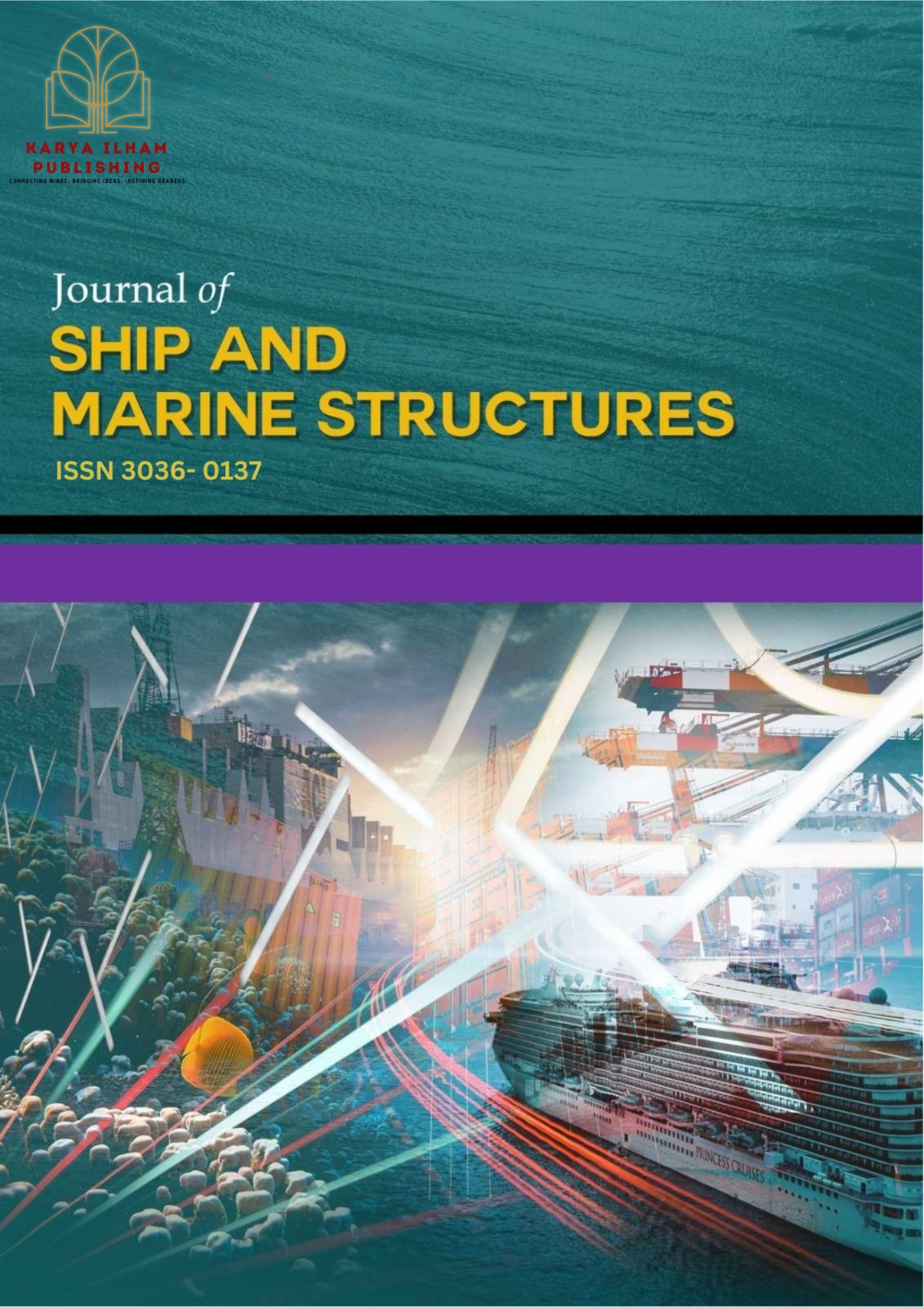Numerical Simulations of Vortex Induced Vibration on Piggyback Pipeline with Different Gap Ratios between the Pipeline and Seabed
DOI:
https://doi.org/10.37934/jsms.9.1.19Keywords:
VIV, piggyback, pipeline, seabed, gap ratio, CFDAbstract
Vortex-induced vibration (VIV) is one of the most significant pipeline design problems. Severe frequency pipeline vibration due to vortex shedding leads to VIV when exposed to current, resulting in high pipeline fatigue damage, and thus, can shorten their lifetime and cause structural collapse. One of the most important factors that influences the VIV is the configuration and design of the pipeline. In the present study, the flow around different configurations of a piggyback pipeline close to a flat seabed has been investigated using Computational Fluid Dynamics (CFD) software, Altair HyperWorks. In this paper, the main objective is to determine the hydrodynamic forces of VIV on a piggyback pipeline with different gap ratios between the pipeline and the seabed. This study examines the flow between several configurations of a pipeline, specifically, a piggyback pipeline, by varying the gap ratios between the pipeline and the seabed. The pipeline was modelled with a constant diameter ratio (d/D) of 0.2, gap ratio between the main pipeline and the piggyback pipeline of 0.2 and gap ratio between pipeline and seabed of (G/D) = 0 to 2.0. The Reynolds number is 3.6 × 104 corresponding to the upper-transition regime, and the reduced velocity is fixed at Ur = 6 to capture the lock-in phenomenon. Results show that lower gap ratios, especially G/D = 0.5, lead to increased drag and vibration amplitudes due to strong flow interference and vortex shedding. Intermediate gap ratios reveal transitional flow behavior. Vibrating cylinders experience significantly higher drag than fixed ones, highlighting the importance of considering structural motion in design. These findings underscore the critical role of the gap ratio in optimizing pipeline performance and stability in offshore applications.














